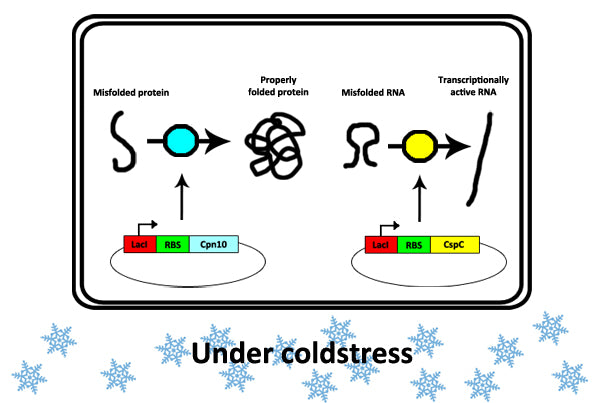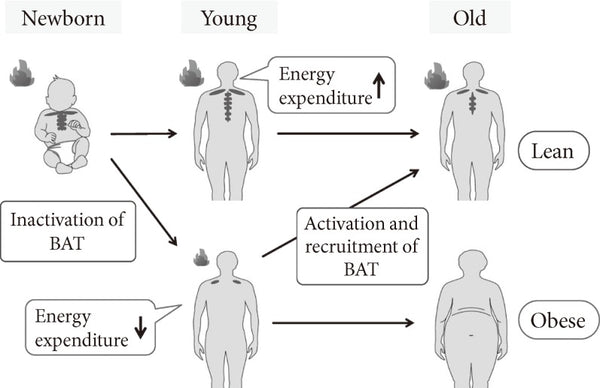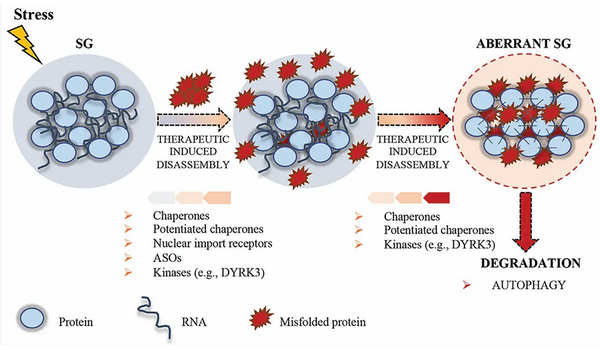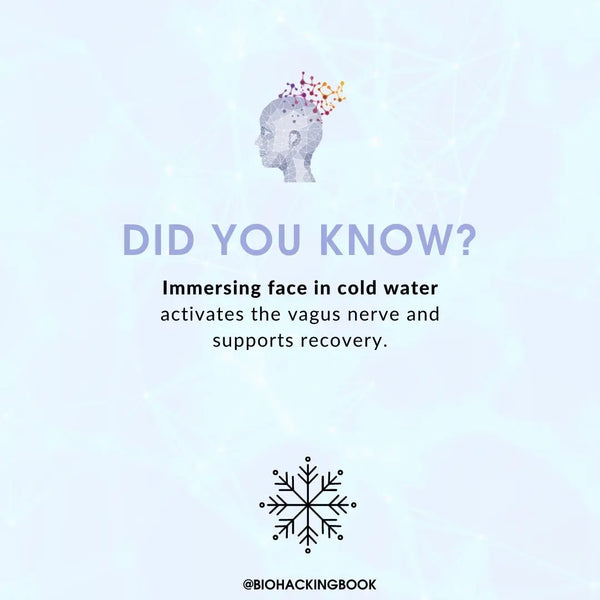Rapid temperature fluctuations have many positive health effects. Cold thermogenesis, i.e., cold exposure and the heat production caused by it, can improve metabolism and blood circulation and activate the so-called brown fat, primarily found in the neck and upper back. The function of brown fat is to quickly generate heat. Brown fat burns ordinary white fat for this purpose. Cold exposure can help with weight management, reduce frostbite and improve cold tolerance.
Introduction
Living organisms have evolved many mechanisms for dealing with environmental stressors and changing conditions. During cold shock, cell membrane and enzyme activity decrease, and you reduce the efficiency in mRNA translation and transcription – everything kind of slows down. This is why for example with severe brain injury, people can be kept in a coma with their body temperature decreased to 35–35.5 degrees Celsius (moderate hypothermia) to preserve brain tissue.
Introduction
Cold-Shock Proteins (CSPs) are multifunctional RNA/DNA binding proteins, characterized by cold-shock domains (CSDs) that fix misfolded proteins and RNA. They’re one of the most evolutionarily conserved proteins found in virtually all organisms.

Image: Cold Shock Proteins In Action
Source: iGEM Amsterdam 2011
The human body tries to maintain a homeostatic temperature around 36-37°C (98°F). Deviations disrupt homeostasis and cause adaptive changes to stay in that range. Proper conditioning leads to increased tolerance and stress adaptation through hormesis. Toleration of either higher or lower climate is based on the exposure the body has received.
Cold metabolism creates two types of reactions:
- Insulative actions (redirection of blood flow away from extremities)
- Metabolic actions (increased metabolic rate to produce heat)
If one reaction is limited i.e. you’re not shivering, then the other will compensate for it by raising metabolism. Insulative reactions include things like goose-bumps, seeking warmth, and decreased blood flow. Once insulative reactions are exhausted, the body recruits non-shivering adaptive thermogenesis (NST), which regulates mitochondrial uncoupling and energy production in skeletal muscle. Shivering burns mostly fatty acids but in higher intensities can tap into glycogen.
Physiological benefits of cold exposure
When cells experience stress related to cold, they activate cold shock proteins (CSP), which begin to regulate gene expression.
The benefits of this process include:
- Cold exposure increases norepinephrine, which promotes focus, vigilance, attention, and mood.
- Therefore, do not engage in heavy cold exposure right before bedtime
- Cold therapy can decrease inflammation seen in arthritis (e.g. cryotherapy).
- Patients with arthritis report significant reductions in pain by just taking a 2-minute cold shower every day for a week.
- Taking an ice bath or a cold shower is great for reducing muscle soreness or pain and recovery from strenuous exercise.
- Therapeutic cold therapy can help with neurodegenerative diseases by suppressing neuronal apoptosis and inflammation.
- Cold exposure increases adiponectin, which is a protein that helps with blood sugar regulation. It also promotes glucose uptake similar to GLUT4 and can be used to prevent type-2 diabetes.
- Cold exposure activates brown adipose tissue, which improves mitochondrial functioning, metabolism, and thermoregulation.
- Increases energy expenditure and metabolic rate (RMR)
- UCP1 or thermogenin gets increased, which promotes stress adaptation, redox balance, and browning of white fat into brown fat, in mice [tissue similar to humans].

Age-related decrease in brown adipose tissue (BAT) and accumulation of body fat. The activity and prevalence of BAT decrease and body fat increase with age, suggesting the activation and recruitment of BAT as an effective regimen to prevent the age-related development of obesity.
UCP1 or Thermogenin is an uncoupling protein found in the mitochondria of brown adipose tissue that’s used to generate heat through non-shivering thermogenesis. Fasting, exercise, heat and cold exposure promote UCP1, which in turn increases heat-shock proteins and lipid metabolism.
- Cold exposure activates the immune system similar to exercise and can strengthen immunity.
- A daily hot to cold shower for 30 days resulted in a 29 % lower self-reported absence from work due to sickness in healthy adults.
- Immersion in 14 °C water for 1 hour increases metabolic rate by 350 %, norepinephrine by 530 %, and dopamine by 250 %
- In practice, this means that one feels a lot more alert, energized, and woke after the cold immersion
Cold exposure & longevity
Cold exposure and the following shock trigger the assembly of stress granules in mammals, which are implicated in many neurodegenerative diseases. The accumulation of these stress granules can promote disease.

Image: Stress granule dynamics.
Source: Wikipedia.
Combining winter swimming with saunas has been shown to increase lysosomal enzymes, which is associated with autophagy and the removal of dysfunctional cell particles/stress granules. Rewarming after cold exposure also induces autophagy so it may be beneficial to first cold shock and then heat shock.
Even if you are doing cold therapy, it’s important to have adequate autophagy because it will help to eliminate the stress granules that assemble during the stress of any kind. Exposure to cold does not increase autophagy directly. Doing cold exposure while fasting with elevated autophagy (due to fasting) is better for the quick elimination of stress granules and aggregates.
This may also explain why the majority of people may react negatively to any form of temperature stress or hormesis. It is because their basal autophagy is already too low due to inhibiting it with diet and eating too frequently. This, in turn, leads to the accumulation of stress granules that would be removed by autophagy otherwise, thus leading to potential disease or other side effects.
Both cold and heat stress have similar properties, such as hormesis, thermoregulation, reduced inflammation, and improved cardiovascular functioning. Heat-shock proteins can also induce autophagy.
Cold exposure training phases
- Putting hands and/or face into cold water for 20-30 seconds
- Start with the hands and see how you feel
- Putting face into cold water activates the trigeminal nerve which, in turn, activates the vagus nerve
- Cold shower after warm shower
- Finish off your shower session with a cold shower (increase time day-by-day)
- Do contrast showers alternating warm and cold showers (30s / 30s)
- Cold shower (no warm shower beforehand)
- Start your day with a cold shower from time to time
- Do not overdo, especially if sleep-deprived and waking up stressed
- Coldwater immersion and winter swimming
- The best time to practice is naturally in the winter
- Increase time and frequency as you progress
- Use gloves, special shoes and a cap if the weather is very cold

Adaptogens (such as rhodiola rosea, schisandra, ginseng, cordyceps or ashwagandha) may increase the ability to tolerate the stress caused by the cold shock. In studies conducted by the United States army, tyrosine (found, for example, in spirulina, fish, turkey, and egg whites) was found to increase the ability to remain functional during cold exposure.
Conclusion
Combining an ice bath or cold shower with a sauna and fasting is the best way to boost the effectiveness of the heat alteration. Winter swimming with sauna has been shown to trigger hormetic adaptation as well as increase lysosomal enzymes. Exposure to mild cold and rewarming hence induces autophagy.
However, it is not recommended to overdo cold exposure. All hormetic stressors like fasting, heat, and cold are most effective as disease prevention, not treatment. You want to keep doing them while you’re already healthy as it’ll protect against illness. Chronic repeated exposure may not be optimal. Therefore it is suggested to have breaks from intensive cold exposure training.
Although the cold doesn’t appear to directly suppress immunity, it might do so when combined with high physical exertion or over-exposure. Intense exercise is known to transiently decrease immune functioning. If you deplete your body’s resources with cold exposure, you may just get sick more easily. Especially if you get exposed to the wind or a draft afterward.
///





